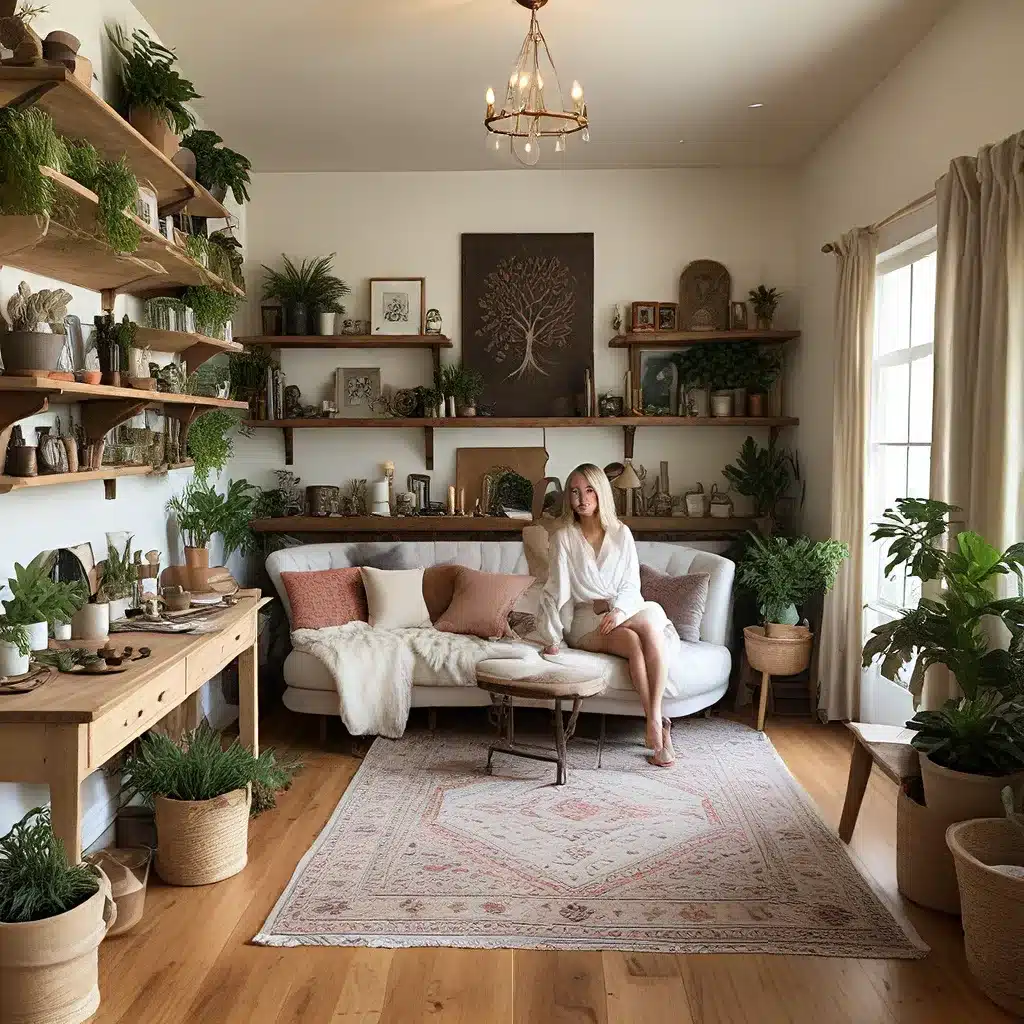
Embracing the Art of Mindful Design
In our fast-paced, technology-driven world, the need for tranquil, rejuvenating spaces has never been more apparent. As interior designers, we have the power to create holistic havens that cater to the well-being of the mind, body, and soul. By thoughtfully incorporating elements of wellness and mindfulness into our design approach, we can cultivate environments that nourish the senses and foster a deeper connection with oneself.
Interior design is not just about aesthetics – it’s about crafting an experience that enriches the lives of those who inhabit the space. Whether you’re designing a private residence, a commercial space, or a luxury retreat, the principles of holistic design can be applied to create a sanctuary that promotes balance, serenity, and personal growth.
Designing for Well-being: Key Considerations
When embarking on a holistic design project, it’s essential to consider the multifaceted needs of the occupants. Here are some crucial elements to incorporate into your design approach:
1. Sensory Experiences
The way we perceive and interact with our surroundings has a profound impact on our overall well-being. Thoughtfully curating the sensory elements within a space – from natural lighting and soothing color palettes to calming sounds and aromatic botanicals – can evoke a profound sense of tranquility and relaxation.
2. Mindfulness and Meditation
Creating designated areas for mindfulness and meditation can be a transformative addition to any holistic design. Whether it’s a cozy nook with comfortable seating, a dedicated yoga studio, or a serene outdoor meditation garden, these spaces encourage introspection, stress reduction, and self-discovery.
3. Biophilic Design
Connecting with nature has been shown to have numerous benefits for both physical and mental health. Incorporating biophilic design elements, such as abundant greenery, natural materials, and direct access to the outdoors, can foster a profound sense of calm and rejuvenation.
4. Personalization and Self-Expression
Holistic design is not one-size-fits-all. By understanding the unique needs, preferences, and lifestyle of the occupants, you can create spaces that empower self-expression and support personal growth. Encouraging the use of personalized decor, artwork, and meaningful mementos can foster a deep sense of belonging and emotional connection within the space.
Crafting Holistic Havens: Design Strategies
Now that we’ve explored the key considerations for holistic design, let’s dive into some practical strategies to bring these principles to life:
Embrace Natural Elements
Incorporate natural materials, such as wood, stone, and linen, to create a grounding and earthy aesthetic. Strategically position large windows and skylights to maximize natural light and foster a seamless connection with the outdoors. Consider integrated greenery, such as living walls or potted plants, to purify the air and infuse the space with a sense of vitality.
Curate Soothing Color Palettes
Opt for muted, earthy color tones that evoke a sense of tranquility and balance. Soft blues, greens, and neutrals can have a calming effect on the mind and body. Incorporate textural elements, such as plush fabrics and natural fibers, to add depth and sensory richness to the space.
Designate Dedicated Wellness Zones
Carve out specific areas within the design that cater to mindfulness and self-care. This could include a meditation nook, a yoga studio, or a spa-inspired bathroom with rejuvenating amenities. Ensure these spaces are well-lit, acoustically isolated, and furnished with comfortable, supportive seating and calming** décor.
Encourage Personalization and Self-Expression
Empower the occupants to personalize the space with their own artwork, photography, and meaningful decor. Incorporate flexible furnishings and modular design elements that allow for customization and adaptability over time. This fosters a deep sense of ownership and emotional investment in the space.
Integrate Sustainable and Eco-Friendly Elements
Prioritize sustainable and eco-friendly materials, finishes, and furnishings to minimize the environmental impact of the design. Energy-efficient lighting, low-VOC paints, and responsibly sourced textiles can all contribute to a holistic and environmentally conscious space.
The Power of Collaboration: Working with Interior Designers
While the principles of holistic design can be applied by homeowners and design enthusiasts alike, the expertise of a professional interior designer can be invaluable in creating truly transformative spaces. Interior designers possess the skills, knowledge, and resources to:
- Understand the unique needs and preferences of the occupants and translate them into a cohesive, personalized design.
- Curate a harmonious blend of sensory elements, from lighting and color to materials and textures, to foster a sense of balance and serenity.
- Incorporate innovative wellness-focused features and amenities that elevate the design beyond the realm of the ordinary.
- Coordinate with a network of trusted vendors and tradespeople to ensure the seamless execution of the design vision.
- Provide ongoing support and guidance throughout the design process, ensuring the final result exceeds the client’s expectations.
By collaborating with an experienced interior designer, you can elevate your living or working environment into a true sanctuary – a space that nourishes the mind, body, and soul, and serves as a haven for personal growth and well-being.
Conclusion: Embracing Holistic Design for a Fulfilling Life
In a world that often demands our constant attention and energy, the importance of creating holistic havens that nurture our overall well-being cannot be overstated. By embracing the principles of mindful design, we can cultivate environments that inspire tranquility, self-discovery, and a heightened appreciation for the present moment.
Whether you’re embarking on a personal home renovation or transforming a commercial space, the opportunity to craft a holistic haven is a powerful one. By prioritizing the well-being of the mind, body, and soul, you can create spaces that enrich the human experience and foster a deeper connection with oneself and the world around us.
So, let us continue to push the boundaries of interior design, weaving in elements of wellness, mindfulness, and sustainability to create sanctuaries that truly nourish the heart, mind, and spirit. Together, we can transform the way we live, work, and thrive – one harmonious, holistic haven at a time.

